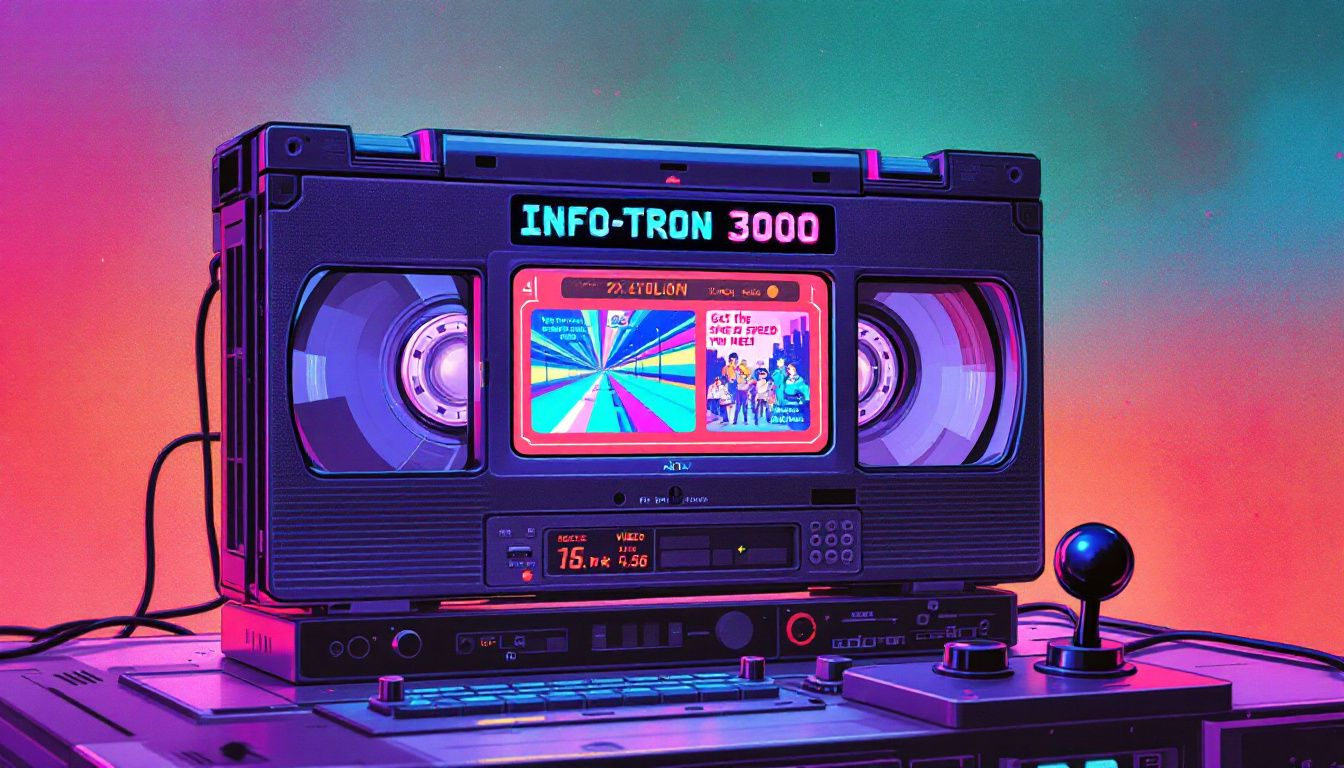How to Make the Best Video Content for Digital Marketing
How to Make the Best Video Content for Digital Marketing
Video content can elevate your digital marketing. Mobile advertising is a crucial element of digital marketing, emphasizing its effectiveness due to full-screen engagement and the potential to meet various commercial objectives. It captures attention and drives engagement. This guide offers tips on creating compelling videos and using them on various platforms.
Key Takeaways
- Video content is increasingly essential for digital marketing, with predictions indicating that 82% of internet traffic will be video by 2027.
- High-quality video marketing strategies require a clear purpose, engaging narratives, and consistency across platforms to enhance brand visibility and user engagement.
- Effective video distribution combines paid, earned, and owned strategies, including collaborations with influencers, to maximize audience reach and drive conversions.
- Mobile advertising plays a crucial role in video marketing. It offers full-screen engagement and the potential to meet various commercial objectives.
Introduction to Digital Marketing
Digital marketing has revolutionized the way businesses connect with their audiences. Unlike traditional marketing, which relies on physical media like print ads and billboards, digital marketing leverages the power of the Internet to reach consumers through various digital channels. These channels include social media platforms, search engines, email marketing, and video marketing, each offering unique opportunities to engage with potential customers.
The rise of digital marketing can be attributed to the widespread adoption of the Internet and mobile devices. Today, consumers spend significant time online, whether browsing social media, searching for information, or watching videos. This shift in consumer behavior has made digital marketing an essential tool for businesses looking to stay competitive in the modern marketplace.
By utilizing digital marketing, companies can gain valuable insights into consumer behavior. This allows them to tailor their marketing efforts to meet the needs and preferences of their target audience. This data-driven approach enhances the effectiveness of marketing campaigns and helps businesses build stronger relationships with their customers.
Understanding Video Content
Video content is any format that features or includes video, ranging from short animated GIFs to comprehensive webinars. This versatility allows businesses to convey complex information engagingly, whether through explainer videos that clarify a company’s offerings or customer testimonials that serve as powerful social proof.
The demand for video content is soaring, with a forecast that 82% of internet traffic will be video by 2027. This trend reflects changing consumer behavior, as more people prefer watching videos over other forms of media. 60% of American consumers opt to watch videos rather than live TV, and the time spent on platforms like YouTube has significantly increased among younger audiences. Mobile advertising presents opportunities and challenges as it leverages full-screen engagement to meet various commercial objectives while avoiding intrusive messaging.
Video content’s ability to tell engaging stories and inspire action makes it a powerful tool in any marketer’s arsenal. Leveraging videos’ emotional and visual appeal helps businesses create memorable experiences, driving audience engagement and fostering brand loyalty.
Understanding Digital Marketing Channels
Digital marketing channels are a way for businesses to reach their target audience online. These channels include social media platforms, search engines, email marketing, and video marketing, each playing a crucial role in a comprehensive digital marketing strategy.
Social media platforms like Facebook, Instagram, and Twitter allow businesses to engage with their audience in real-time, fostering a sense of community and brand loyalty. These platforms are ideal for sharing content, running ads, and interacting with customers directly.
Search engines like Google and Bing are essential for driving organic traffic to a website. By optimizing content for search engines through search engine optimization (SEO), businesses can improve their visibility and attract more visitors. This involves using relevant keywords, creating high-quality content, and building backlinks to enhance search engine rankings.
Email marketing remains a powerful tool for nurturing leads and maintaining customer relationships. By sending personalized and targeted emails, businesses can inform their audience about new products, promotions, and company updates, driving engagement and conversions.
Video marketing on platforms like YouTube has become increasingly popular due to its ability to convey complex information in an engaging and easily digestible format. High-quality videos can capture attention, tell compelling stories, and inspire action, making them a valuable asset in any digital marketing strategy.
The Role of Video in Digital Marketing
Video marketing, the strategic use of videos to promote a brand, product, or service, stands out as one of the most effective methods of connecting with audiences and enhancing brand visibility. Unlike traditional marketing methods, videos offer a dynamic and immersive way to present information, making them a staple in digital marketing channels such as social media platforms, email campaigns, and Internet marketing. With its full-screen engagement, mobile advertising is also a key strategy in video marketing, offering significant effectiveness in reaching various commercial objectives.
The impact of video content on brand awareness and engagement is profound. Real-time videos, for instance, enable brands to create personal connections with their audiences, fostering higher engagement levels. Moreover, videos play a crucial role in the buyer’s journey, with 89% of shoppers being convinced to consider products or services after watching video content.
Digital marketers value video marketing for its ability to generate leads and drive conversions, with 90% of marketers attesting to its effectiveness. Whether through animated explainer videos that simplify complex ideas or short-form videos that cater to the viewing habits of younger audiences, integrating video into marketing strategies is essential for staying competitive in the digital landscape.
Key Elements of High-Quality Video Content
Creating high-quality video content starts with an engaging storyline. A well-crafted script can set the desired tone and inspire viewers, making the narrative crucial. Incorporating a compelling narrative captures attention and enhances the overall impact of the message being conveyed. Additionally, considering mobile advertising when crafting these storylines is essential to maximize engagement and meet various commercial objectives.
High-quality visuals are equally important. Effective cinematography, thoughtful lighting choices, and clear audio quality enhance the video’s visual and auditory appeal. Graphics and animations can enhance understanding and add visual interest, making complex information more digestible.
Maintaining a consistent visual and messaging style across all videos strengthens brand identity and recognition. This consistency helps build a cohesive brand image with which viewers can easily identify. Moreover, effective editing ensures a smooth narrative flow, crucial for maintaining viewer engagement throughout the video.
Lastly, a clear call to action should guide viewers towards the next step after watching. Whether subscribing to a channel, visiting a website, or purchasing, an effective call to action can significantly influence viewer behavior and drive desired outcomes.
Types of Video Content for Different Platforms
Tailoring video content to fit the specific characteristics of each distribution platform can lead to better audience engagement. Different platforms have unique requirements and viewer expectations, making it essential to customize content accordingly. Optimizing video content for mobile advertising is also crucial to enhance audience engagement, as it leverages full-screen engagement and meets various commercial objectives.
Understanding the nuances of each platform is key to creating effective video content for social media, YouTube, and websites, from short-form videos that capture attention on social media to polished, professional content for YouTube and engaging landing page videos. Let’s delve into the specifics of creating effective video content for social media, YouTube, and websites.
Social Media Videos
Social media platforms like YouTube, Facebook, Instagram, and TikTok offer dynamic environments for social media marketing video marketing campaigns. The primary goal for marketers using these platforms is to increase brand awareness, leveraging social media’s massive reach and engagement potential.
Raw and unedited vlog-style videos on platforms such as Instagram work very well, especially for Stories. This authenticity resonates well with audiences, creating a sense of relatability and immediacy. Mobile advertising plays a significant role in social media video marketing, emphasizing its effectiveness due to full-screen engagement.
Additionally, digital platforms like Facebook and Twitter allow for more structured content. Marketers can post a mix of promotional videos, customer testimonials, and engaging short clips to keep the audience engaged.
YouTube Videos
As a leading video platform, YouTube demands high-quality and engaging content to meet viewer expectations. Videos on YouTube should be polished and well-edited and move quickly to keep the audience’s attention.
Optimization is crucial for increasing visibility on YouTube. With 8.96% of Google’s search results containing a video, ensuring that your content is optimized for search engines can significantly enhance its reach. Platforms like Vimeo and Twitch also benefit from optimization strategies, boosting video views and engagement.
By understanding YouTube’s unique expectations and optimization techniques, marketers can create content that engages and ranks well in search results, driving more views and interactions. Additionally, optimizing YouTube videos for mobile advertising can enhance reach and engagement.
Website and Landing Page Videos
Video content on websites and landing pages can significantly enhance user experience and drive engagement. Whether it’s an explainer video detailing a product or service or a customer testimonial that builds trust, videos can effectively guide users toward desired actions.
Optimizing videos for load times and mobile compatibility ensures effectiveness. Quick loading times and a seamless mobile experience are critical for retaining visitors and maximizing the impact of video content. Optimizing website and landing page videos for mobile advertising is crucial to ensure full-screen engagement and meet various commercial objectives.
Strategically placing videos on landing pages and websites enhances user interactions, leading to higher conversion rates and improved overall site performance.
Video Editing and Production
Creating high-quality video content is a cornerstone of effective video marketing. The process begins with video production, which involves planning, scripting, filming, and editing. Each stage is crucial to ensuring the final product is polished and professional.
Video editing is where the magic happens. Using software like Adobe After Effects or Canva, businesses can transform raw footage into engaging videos that captivate their audience. These tools offer a range of features, from basic editing functions to advanced motion graphics and effects, allowing even those with limited editing experience to create impressive videos.
Incorporating video into digital marketing efforts can significantly enhance a brand’s online presence. Videos can convey an emotional tone, promote thought leadership, and help audiences accomplish their goals. Video content can drive engagement and conversions, whether it’s a YouTube video showcasing a product, a tutorial on a company’s website, or a social media clip highlighting customer testimonials.
By investing in high-quality video production and leveraging the right tools, businesses can create compelling video content that resonates with their audience and supports their overall marketing strategy.
Video Marketing Strategies
A clearly defined purpose is essential for guiding the entire video production process. Brands should strategically plan, produce, position, and promote their video content to ensure it aligns with their marketing goals. Mobile advertising is crucial to video marketing strategies, emphasizing its effectiveness due to full-screen engagement.
Authenticity in video content can be achieved by including real voices and candid moments, making the content more relatable and engaging. User-generated content is another valuable resource, allowing brands to leverage their audience’s creativity and build a sense of community.
Successful strategies often involve a blend of innovative visuals and familiar elements. For instance, HoneyBook’s video campaign balanced product familiarity with fresh, engaging visuals, significantly increasing sign-ups. Incorporating video into email marketing can also boost engagement and click-through rates.
Overcoming Challenges in Video Marketing
Marketers face several challenges in video marketing, such as keeping up with the rapid proliferation of digital channels and capturing consumer attention amidst numerous distractions. Overcoming these challenges requires maintaining professional quality in video content. Investing in high-quality equipment and skilled videographers can ensure the production of professional-grade videos.
However, time constraints often pose a significant hurdle, as traditional video production involves multiple stages like scripting, filming, and editing. Marketers can address these issues by shooting video content with extra framing, allowing easy cropping for various platforms, and fitting diverse aspect ratios.
Differentiating content to stand out in a competitive landscape is essential for capturing and retaining audience attention. Mobile advertising presents opportunities and challenges in video marketing, with the potential for full-screen engagement and the need to avoid intrusive messaging.
Tools and Software for Video Creation
Several tools and software can help create high-quality video content. Adobe After Effects is renowned for its video editing and motion graphics capabilities, which integrate well with other products. Canva’s video editor offers basic editing features, animations, effects, and screen recording, making it accessible for beginners.
For those looking for free tools, Blender provides a robust platform for animation and modeling tasks. On the professional end, Maya excels in creating complex characters and effects, which are widely used in the animation industry.
When choosing animation software, consider factors like ease of use, compatibility, feature set, and budget. Tools like Unreal Engine offer powerful real-time rendering capabilities suitable for game development and cinematic productions. Additionally, optimizing video content for mobile advertising is crucial to leverage full-screen engagement and meet various commercial objectives.
Measuring Video Performance
Key Performance Indicators (KPIs) are essential for assessing the effectiveness of video marketing. Metrics like video engagement reveal how relevant content is to viewers by tracking how long they watch before dropping off. Utilizing analytics from video hosting platforms can help track performance and optimize future distribution strategies.
Metrics such as view-through rates and conversion rates indicate the percentage of viewers who watch a video to completion and the number of new leads or customers it generates, respectively. Additionally, tracking mobile advertising metrics is crucial to assess the effectiveness of video marketing campaigns.
Tips for Effective Video Distribution
Effective video distribution maximizes audience reach and ensures engagement with targeted viewers. Paid distribution methods, such as social media ads, can amplify the reach and visibility of video content. Mobile advertising also plays a crucial role in effective video distribution, maximizing audience reach through full-screen engagement on mobile devices.
Earned distribution relies on users willingly sharing your content, like social media shares and organic search results. Owned distribution allows you to share videos on channels you control, such as your website and social media accounts.
Collaborating with influencers can significantly increase video reach by leveraging their established audiences. Combining these distribution methods allows marketers to reach a larger audience effectively and enhance video marketing efforts.
Case Studies of Successful Video Campaigns
Google’s ‘Parisian Love’ ad, aired during the Super Bowl, effectively used a love story told entirely through Google searches, striking an emotional chord with viewers. This campaign demonstrated the power of storytelling in video marketing, television advertising, and digital ads.
MobileMuster targeted Generation Z with a video emphasizing emotional connections to encourage recycling old phones and mobile devices. This approach successfully resonated with the audience, driving engagement and awareness. Mobile advertising played a crucial role in the success of MobileMuster’s campaign, highlighting its effectiveness in driving full-screen engagement and meeting various commercial objectives.
Bailey Nelson’s video campaign increased branded search by 40% and was recognized as a top YouTube campaign. These case studies highlight the impact of well-executed video marketing strategies in achieving significant results.
Summary
In summary, creating high-quality video content tailored to different platforms, employing effective video marketing strategies, and overcoming challenges are crucial for digital marketing success. By leveraging the right tools, measuring performance, and distributing content effectively, businesses can harness the full potential of video marketing to drive engagement and achieve their marketing goals. Additionally, mobile advertising plays a crucial role in video marketing due to its effectiveness with full-screen engagement and the potential to meet various commercial objectives.
Frequently Asked Questions
Why is video content important for digital marketing?
Video content is essential for digital marketing as it effectively engages audiences and enhances brand visibility, significantly influencing consumer behavior. With projections indicating that 82% of internet traffic will be video by 2027, it’s a powerful medium for storytelling and connection.
How do I optimize my YouTube videos for better visibility?
To enhance the visibility of your YouTube videos, focus on creating high-quality, engaging content while employing SEO techniques like relevant keywords, enticing thumbnails, and well-structured video descriptions. This approach will significantly improve your chances of being discovered by a wider audience.
What are some key metrics for measuring video performance?
To effectively measure video performance, focus on key metrics such as engagement rates, view-through rates, unique users, and conversion rates. These will provide valuable insights into your video marketing effectiveness and inform necessary content enhancements.
What tools can I use to create high-quality video content?
To create high-quality video content, consider using tools such as Adobe After Effects for advanced editing, Canva for user-friendly design, and Blender for 3D animation. Each tool caters to various production needs and skill levels, ensuring effective results.
How can I effectively distribute my video content?
To effectively distribute your video content, utilize a combination of paid, earned, and owned channels by investing in social media ads, encouraging organic shares, and sharing on your platforms. Collaborating with influencers can further enhance your reach and impact.






